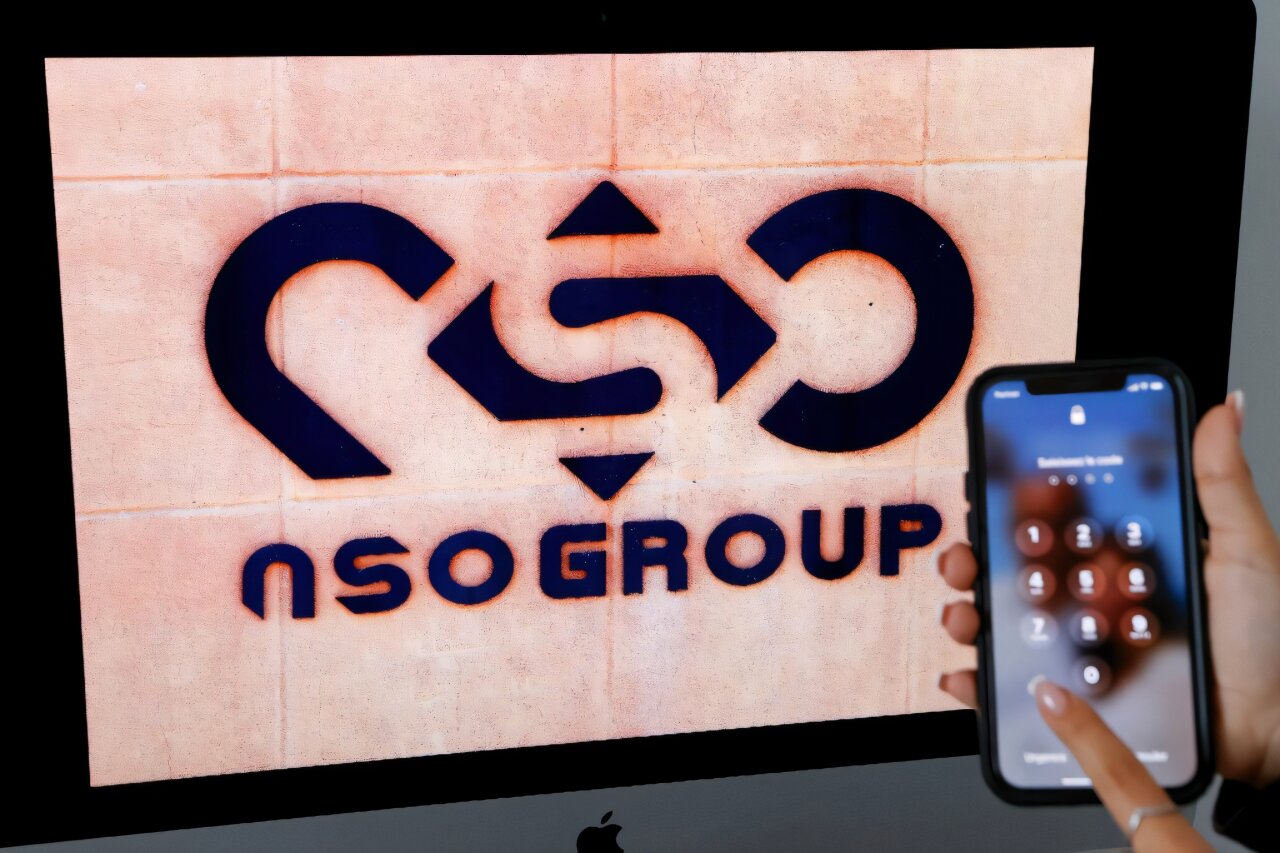Tech
US court bars NSO Group from installing spyware on WhatsApp

A US judge on Friday granted an injunction barring Israeli spyware maker NSO Group from targeting WhatsApp users but slashed a $168 million damages award at trial to just $4 million.
District Judge Phyllis Hamilton ruled that NSO Group’s behavior fell short of a “particularly egregious” standard needed to support the jury’s calculations on a financial penalty.
But in the ruling, seen by AFP, she said the court “concluded that defendants’ conduct causes irreparable harm, and there being no dispute that the conduct is ongoing” the judge granted WhatsApp owner Meta an injunction to stop NSO Group’s snooping tactics at the messaging service.
“Today’s ruling bans spyware maker NSO from ever targeting WhatsApp and our global users again,” WhatsApp boss Will Cathcart said in a statement.
“We applaud this decision that comes after six years of litigation to hold NSO accountable for targeting members of civil society.”
Evidence at trial showed that NSO Group reverse-engineered WhatsApp code to stealthily install spyware targeting users, according to the ruling.
The spyware was repeatedly redesigned to escape detection and bypass security fixes at WhatsApp, the court concluded.
The lawsuit, filed in late 2019, accused NSO Group of cyberespionage targeting journalists, lawyers, human rights activists and others using the encrypted messaging service.
Hamilton ruled however that the $168 million damages verdict awarded to Meta earlier this year was excessive.
“There have simply not yet been enough cases involving unlawful electronic surveillance in the smartphone era for the court to be able to conclude that defendants’ conduct was ‘particularly egregious’,” Hamilton wrote in the ruling which was seen by AFP.
“As time goes on, more of a shared societal consensus may emerge about the acceptability of defendants’ conduct.”
‘Malicious code’
Founded in 2010 by Israelis Shalev Hulio and Omri Lavie, NSO Group is based in the seaside high-tech hub of Herzliya, near Tel Aviv.
Media website TechCrunch reported Friday that a US investment group has acquired controlling interest in NSO Group.
The Israeli firm produces Pegasus, a highly invasive tool that can reportedly switch on a target’s cell phone camera and microphone and access data on it, effectively turning the phone into a pocket spy.
The suit filed in a California federal court contended that NSO tried to infect approximately 1,400 “target devices” with malicious software to steal valuable information.
Infecting smartphones or other gadgets being used for WhatsApp messages meant the content of messages encrypted during transmission could be accessed after they were unscrambled.
The complaint said the attackers “developed a program to enable them to emulate legitimate WhatsApp network traffic in order to transmit malicious code” to take over the devices.
The software has been pinpointed by independent experts as being used by nation states, some of them with poor human rights records.
NSO Group has maintained it only licenses its software to governments for fighting crime and terrorism.
© 2025 AFP
Citation:
US court bars NSO Group from installing spyware on WhatsApp (2025, October 18)
retrieved 18 October 2025
from https://techxplore.com/news/2025-10-court-bars-nso-group-spyware.html
This document is subject to copyright. Apart from any fair dealing for the purpose of private study or research, no
part may be reproduced without the written permission. The content is provided for information purposes only.
Tech
AWS CEO Matt Garman Wants to Reassert Amazon’s Cloud Dominance in the AI Era

You might think Amazon’s biggest swing in the AI race was its $8 billion investment in Anthropic. But AWS has also been building in-house foundation models, new chips, massive data centers, and agents meant to keep enterprise customers locked inside its ecosystem. The company believes these offerings will give it an edge as businesses of all shapes and sizes deploy AI in the real world.
WIRED sat down with AWS CEO Matt Garman ahead of the company’s annual re:Invent conference in Las Vegas to discuss his AI vision, and how he plans to extend Amazon’s lead in the cloud market over its fast-rising competitors, Microsoft and Google.
Garman is betting that AI is a service that AWS can deliver more cheaply and reliably than its rivals. Through Bedrock, Amazon’s platform for building AI apps, he says customers can access a variety of AI foundation models while keeping the familiar data controls, security layers, and reliability that AWS is known for. If that pitch holds up, it could help AWS dominate in the AI era.
“Two years ago, people were building AI applications. Now, people are building applications that have AI in them,” said Garman, arguing that AI is becoming a feature inside large products rather than a standalone experiment. “That’s the platform that we’ve built, and that’s where I think you see AWS really start to take the lead.”
Many of the announcements at this year’s re:Invent fall along these lines. Amazon unveiled new, cost-efficient AI models in its Nova series; agents that can work autonomously on software development and cybersecurity tasks; as well as a fresh offering, Forge, that lets enterprises cheaply train AI models on their own data.
The stakes are high for AWS to get this right. While Amazon’s cloud unit dominated the smartphone era, smaller rivals like Google Cloud and Microsoft Azure have grown at higher rates since the arrival of ChatGPT. Microsoft and Google have surged by tightly integrating with frontier AI models—the technology underlying ChatGPT and Gemini, respectively—attracting enterprises eager to experiment with cutting-edge capabilities.
This rise of AWS’s rivals has raised questions about Amazon’s broader AI strategy, and how the incumbent will fare in the years to come.
Garman says he’s been hearing these concerns for years, but less so in recent months. He argues that the tide is turning, pointing to AWS’s stronger-than-expected results in the company’s third quarter as evidence that his strategy is working.
Tech
Melinda French Gates on Secrets: ‘Live a Truthful Life, Then You Don’t Have Any’

Take it from me: Spending an hour with Melinda French Gates will restore at least an iota of your faith in humanity. The billionaire philanthropist, investor, and longtime advocate for women’s and girls’ rights is the rare example of an über-wealthy American who takes seriously the responsibility that their wealth confers.
In Gates’ case, she’s now channeling much of that responsibility—and billions of her own dollars—into Pivotal Ventures, a collective of organizations focused on advancing women’s interests in the US and around the world. Most recently, Pivotal announced $250 million in awards to women’s health organizations in 22 countries. Given the Trump administration’s ongoing assault on women’s interests, and diversity writ large, as well as the dystopian cuddle puddle taking place between tech industry leaders (Gates’ ex-husband, Bill, has been a part of that shift) and President Trump, it felt like a particularly salient moment to check in with Gates about, well, all of it.
From her own path through the masculine “debate club” of Big Tech to the billionaire boys who aren’t giving away the big bucks, I found myself pleasantly surprised, and even a little bit inspired, by Gates’ candor in discussing the very real challenges of this particular moment. So if you checked the news and felt even slightly infuriated this morning, keep reading. It helps to be reminded that not all billionaires are created equal—and that some of them are still pushing for more equality overall.
This interview has been edited for length and clarity.
KATIE DRUMMOND: Melinda French Gates, welcome to The Big Interview. Thank you so much for being here.
MELINDA FRENCH GATES: Thanks for having me, Katie.
So we always start these conversations with some rapid-fire questions. It’s a warmup. Get your brain working, get your muscles working. Are you ready?
I am ready.
OK, first thing you do when you wake up in the morning.
Get my coffee.
One tech product you wish you could invent for women’s health.
Self-controlled reproductive tool.
I want to hear more about that. What’s one myth about philanthropy you wish people would stop believing?
That it can solve everything.
One book everyone should read.
The Book of Awakening by Mark Nepo.
What’s a habit you refuse to give up?
Having a Coke, a real Coke over ice. I just had one.
The Coke with sugar. The real …
Tech
Use of digital ID in UK achieves statutory status | Computer Weekly

The use of “trusted” digital ID software to verify your identity online in the UK has taken on a statutory footing as of 1 December.
The measures contained in the Data (Use and Access) Act, which became law in June this year, have now taken effect, introducing a formal and legally backed set of standards and governance rules with which all certified providers of digital verification services (DVS) must conform.
The move is intended to provide the public with confidence when using certified digital identity apps, through a framework that shows suppliers are considered trustworthy.
The statutory regime is also likely to underpin the UK government’s plans for a national digital ID scheme, which was announced by prime minister Keir Starmer in September, and is due to go through a consultation phase early next year.
The statutory system formalises processes that have been in place on a trial basis for some time. Suppliers of DVS tools have to conform to the government’s Digital Identities and Attributes Framework (DIATF) and associated codes that add further specifications for use cases such as right to work or right to rent checks.
Once certified, suppliers are listed on a statutory register and will be able to use a trust mark to prove their conformance for potential users. So far, 48 DVS providers who have gained DIATF certification have applied to join the register.
“This regime of standards, governance and oversight helps to ensure the public can trust digital verification services offered under it in the UK,” said John Peart, CEO of the Office for Digital Identities and Attributes (OfDIA), which oversees the framework.
Critical time for digital identity
The move comes at a critical time for digital identity in the UK. Suppliers were blindsided by Starmer’s announcement of a national digital ID scheme that will be mandatory for right-to-work checks by 2029. Many in the sector believe such a national scheme undermines all the work and investment they have put in to developing apps and achieving conformance to the statutory regime.
Today (2 December 2025), representatives of DIATF-certified DVS providers are meeting with Darren Jones, Starmer’s chief secretary, who has taken on policy responsibility in the Cabinet Office for the digital ID plan.
Last week’s Autumn Budget revealed that government has put aside £1.8bn to develop the national scheme, which many suppliers say is a needless expense when they already provide apps that can deliver right-to-work checks and other services within the scope of the government proposals.
“[Government] is proposing to add £1.8bn of new costs to build a system that duplicates DVS,” said Adrian Field, director of market development at digital ID supplier OneID, writing on LinkedIn.
“Is this the best use of taxpayer funds? [The] private sector has proven that ID services can be delivered far more effectively and at far cheaper cost – why not use the efficient, effective services more?”
The meeting with Jones came about after industry representatives requested a formal collaboration on the government scheme.
The Association of Digital Verification Professionals wrote an open letter to Jones, to request a meeting to propose a cross-sector forum to “support clarity and alignment” on the digital identity scheme, noting that government messaging on its policy has made no mention of the DIATF regime.
“For over a decade, with cross-party support, the UK has developed the Digital Identity and Attribute Trust Framework – a voluntary model that protects individual rights, lets government regulate and allows industry to innovate,” the letter said.
“It is unclear whether the aim is a new national digital ID stored in certified private wallets, a single credential sitting solely in the Gov.uk Wallet accessed by certified DVS providers (the current plan), or something entirely different. Each variation represents a fundamentally different social and economic model. This uncertainty risks market stability, discourages investment and weakens trust across the entire digital ecosystem – not just government.”
An online petition opposing the introduction of digital ID in the UK has gathered almost three million signatures, and many DVS providers are privately outraged at the government’s proposals.
MPs on the Home Affairs Committee launched an inquiry in June 2025 into the introduction of new forms of digital ID. At a hearing last month, the MPs were warned that a mandatory digital ID could pave the way for greater mass surveillance and digital exclusion, and would fail to deliver Starmer’s suggested benefits of reducing illegal migration or preventing people from working illegally.
-

 Sports1 week ago
Sports1 week agoWATCH: Ronaldo scores spectacular bicycle kick
-

 Entertainment1 week ago
Entertainment1 week agoWelcome to Derry’ episode 5 delivers shocking twist
-

 Politics1 week ago
Politics1 week agoWashington and Kyiv Stress Any Peace Deal Must Fully Respect Ukraine’s Sovereignty
-

 Business1 week ago
Business1 week agoKey economic data and trends that will shape Rachel Reeves’ Budget
-

 Tech2 days ago
Tech2 days agoGet Your Steps In From Your Home Office With This Walking Pad—On Sale This Week
-

 Politics1 week ago
Politics1 week ago53,000 Sikhs vote in Ottawa Khalistan Referendum amid Carney-Modi trade talks scrutiny
-

 Tech1 week ago
Tech1 week agoWake Up—the Best Black Friday Mattress Sales Are Here
-

 Entertainment2 days ago
Entertainment2 days agoSadie Sink talks about the future of Max in ‘Stranger Things’


















